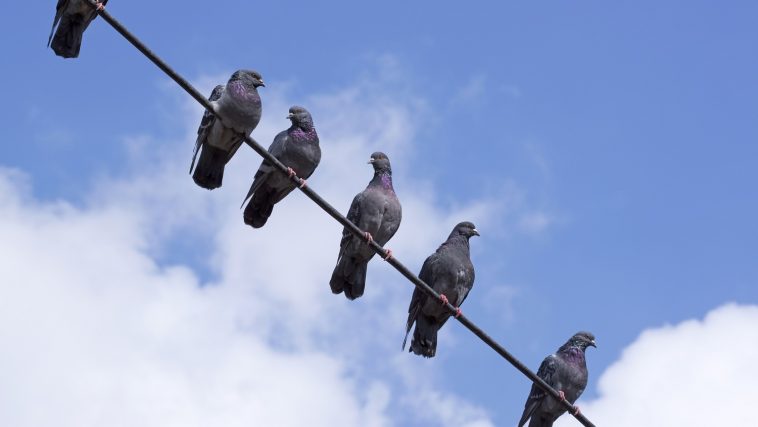[Originally published as Using Pigeons to Diagnose Cancer?]
Pigeons are surprisingly smart birds. Quite a while ago, I wrote about how pigeons can learn to solve probability problems better than some people. In addition, homing pigeons can use sound to find their way back home. Now here’s a new way of looking at the intelligence of pigeons: they can use their pattern-recognition abilities to find cancer in microscopic images of tissue!
In the study, researchers put 16 pigeons in a box with a computer screen. They were shown microscopic images of breast tissue, some of which indicated the presence of cancer and some of which did not. There were two “buttons” on the computer screen, one on each side of the image. One button represented the answer, “this image shows cancer,” and the other button represented the answer, “this image does not show cancer.” Each pigeon was free to choose either button, and if the pigeon was correct, it got a pellet of food.
At first, of course, the pigeons’ answers were random. Over time, however, they learned to look at patterns in the image, and within a matter of hours, they were identifying cancer at a rate that was superior to random guessing. Within a month, they were spotting cancer with about an 80% accuracy rate.
The most interesting effect, however, was obtained when several birds were shown an image and their combined answers were used to determine whether or not cancer was present. When that was done, the accuracy of the diagnosis was 99%, which is about as good as a trained person!
One highly significant aspect of this study is that the birds did all their work alone, in the box. There wasn’t a person present. This is important because many animals are extremely perceptive, and they can take visual cues from people, even when those cues are unconscious. Thus, whenever an animal can do something novel, there is always the possibility that it is responding to its caretaker, not performing the feat on its own. Since people were not present during the times the pigeons were shown the images in this study, it is clear that the birds were actually learning how to recognize patterns that indicate cancer.
Interestingly enough, the researchers repeated the experiment using mammogram images instead of microscopic images of tissue. When confronted with these images, the pigeons didn’t do nearly as well. The researchers tried to get them to spot suspicious masses in mammogram images, which is a difficult task, even for some trained people. While the pigeons could eventually memorize the correct answer for images that had been shown to them multiple times, they couldn’t look at a new image and correctly identify a problem, as they did with the microscopic images of tissue. Obviously, then, a pigeon’s pattern-recognition abilities are well suited to some types of images but not others.
Now, please don’t think that the researchers carried out this study in the hopes of having pigeons do cancer diagnosis one day! They were trying to compare how pigeons learn to how people learn. While it’s not clear what this study can tell us about that, it is clear that pigeons are very good at learning to recognize certain patterns.
It gives a whole new meaning to the term “bird brain,” doesn’t it?






